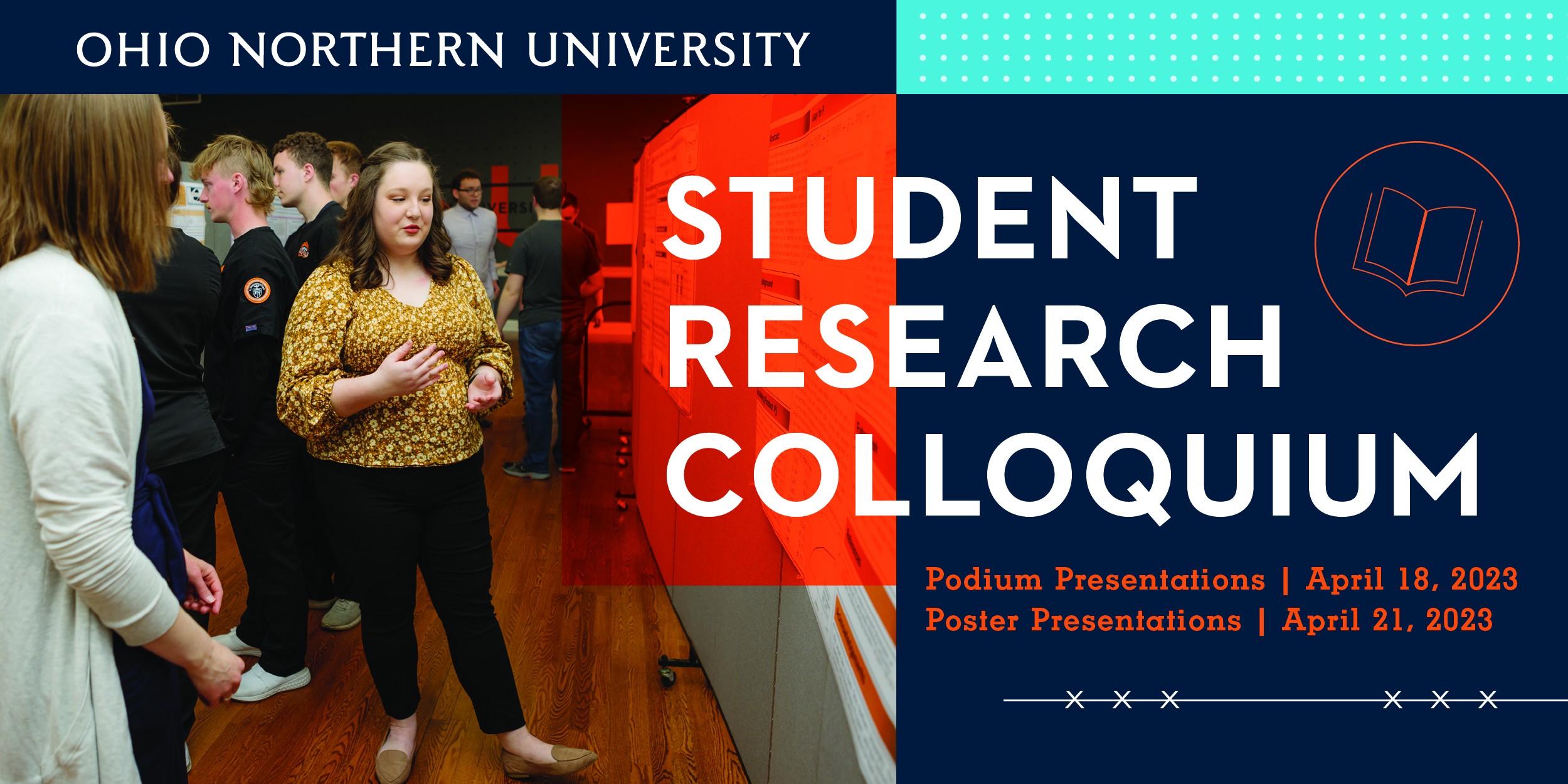Advisor(s)
Phillip R Zoladz
Confirmation
1
Document Type
Poster
Location
ONU McIntosh Center; McIntosh Activities Room
Start Date
21-4-2023 10:00 AM
End Date
21-4-2023 10:50 AM
Abstract
Pharmacotherapy for stress-related psychological disorders remains inadequate. Patients who are treated with conventional pharmacological agents frequently report negligeable symptom reduction, and, in most cases, less than 50% experience full remission. Clearly, there is a need for additional pharmaceutical research into both established and novel approaches to alleviate these conditions. Over the past several years, there has been a renewed interest in the use of psychedelics to aid in the treatment of psychological disorders. Several studies have reported promising results in patients with major depression, anxiety disorders, and post-traumatic stress disorder (PTSD) following treatment with psychedelic agents such as lysergic acid diethylamide (LSD), 3,4-methylenedioxymethamphetamine (MDMA), ayahuasca, ketamine, and psilocybin. However, the precise behavioral and neurobiological mechanisms for these effects remain unclear. Thus, we aimed to develop an animal model of PTSD that involved prophylactic treatment with psilocybin, a 5-HT2A agonist, that could be used to further understand the mechanisms underlying the benefit of psychedelic substances in treating these disorders. Adult male and female Sprague-Dawley rats were subjected to the single prolonged stress (SPS) paradigm, including 2 hours of physical restraint, 15 minutes of forced swim, and ether vapor exposure until loss of consciousness. Five minutes following ether-induced loss of consciousness, the rats were intraperitoneally injected with vehicle (0.9% saline) or psilocybin (1 mg/kg). One week later, the rats underwent a battery of behavioral tests, including the elevated plus maze (EPM), startle response assessment, open field testing, and novel object recognition (NOR) testing. No effects of SPS or psilocybin were observed for EPM behavior. SPS led to enhanced startle responses in males, but not females, which was prevented by psilocybin. SPS also increased locomotor activity in the open field in males, but not females, and this effect was not prevented by psilocybin. SPS had no impact on NOR memory in males, but enhanced memory in females. Interestingly, psilocybin administration, alone or in combination with SPS, enhanced NOR memory in males only. These findings support a complex interaction between the administration of psilocybin and the prevention of stress-induced behavioral sequelae that depends on both sex and the type of behavioral task.
Recommended Citation
Del Valle, Colin R.; Sparkman, Heather R.; Naylor, Margaret M.; Cruea, Connor M.; Rice, Rachel E.; Miller, Claire E.; Bramlage, Brooke E.; Puppel, Lillianna P.; Brown, Madison L.; Al-Olimat, Aleece K.; Dietz, Elizabeth S.; and Zoladz, Phillip R., "Psilocybin prevents symptoms of hyperarousal and enhances novel object recognition in rats exposed to the single prolonged stress paradigm" (2023). ONU Student Research Colloquium. 52.
https://digitalcommons.onu.edu/student_research_colloquium/2023/posters/52
Level of Access
Open Access
Open Access
Available to all.
Included in
Behavior and Behavior Mechanisms Commons, Biological Psychology Commons, Other Pharmacy and Pharmaceutical Sciences Commons
Psilocybin prevents symptoms of hyperarousal and enhances novel object recognition in rats exposed to the single prolonged stress paradigm
ONU McIntosh Center; McIntosh Activities Room
Pharmacotherapy for stress-related psychological disorders remains inadequate. Patients who are treated with conventional pharmacological agents frequently report negligeable symptom reduction, and, in most cases, less than 50% experience full remission. Clearly, there is a need for additional pharmaceutical research into both established and novel approaches to alleviate these conditions. Over the past several years, there has been a renewed interest in the use of psychedelics to aid in the treatment of psychological disorders. Several studies have reported promising results in patients with major depression, anxiety disorders, and post-traumatic stress disorder (PTSD) following treatment with psychedelic agents such as lysergic acid diethylamide (LSD), 3,4-methylenedioxymethamphetamine (MDMA), ayahuasca, ketamine, and psilocybin. However, the precise behavioral and neurobiological mechanisms for these effects remain unclear. Thus, we aimed to develop an animal model of PTSD that involved prophylactic treatment with psilocybin, a 5-HT2A agonist, that could be used to further understand the mechanisms underlying the benefit of psychedelic substances in treating these disorders. Adult male and female Sprague-Dawley rats were subjected to the single prolonged stress (SPS) paradigm, including 2 hours of physical restraint, 15 minutes of forced swim, and ether vapor exposure until loss of consciousness. Five minutes following ether-induced loss of consciousness, the rats were intraperitoneally injected with vehicle (0.9% saline) or psilocybin (1 mg/kg). One week later, the rats underwent a battery of behavioral tests, including the elevated plus maze (EPM), startle response assessment, open field testing, and novel object recognition (NOR) testing. No effects of SPS or psilocybin were observed for EPM behavior. SPS led to enhanced startle responses in males, but not females, which was prevented by psilocybin. SPS also increased locomotor activity in the open field in males, but not females, and this effect was not prevented by psilocybin. SPS had no impact on NOR memory in males, but enhanced memory in females. Interestingly, psilocybin administration, alone or in combination with SPS, enhanced NOR memory in males only. These findings support a complex interaction between the administration of psilocybin and the prevention of stress-induced behavioral sequelae that depends on both sex and the type of behavioral task.

